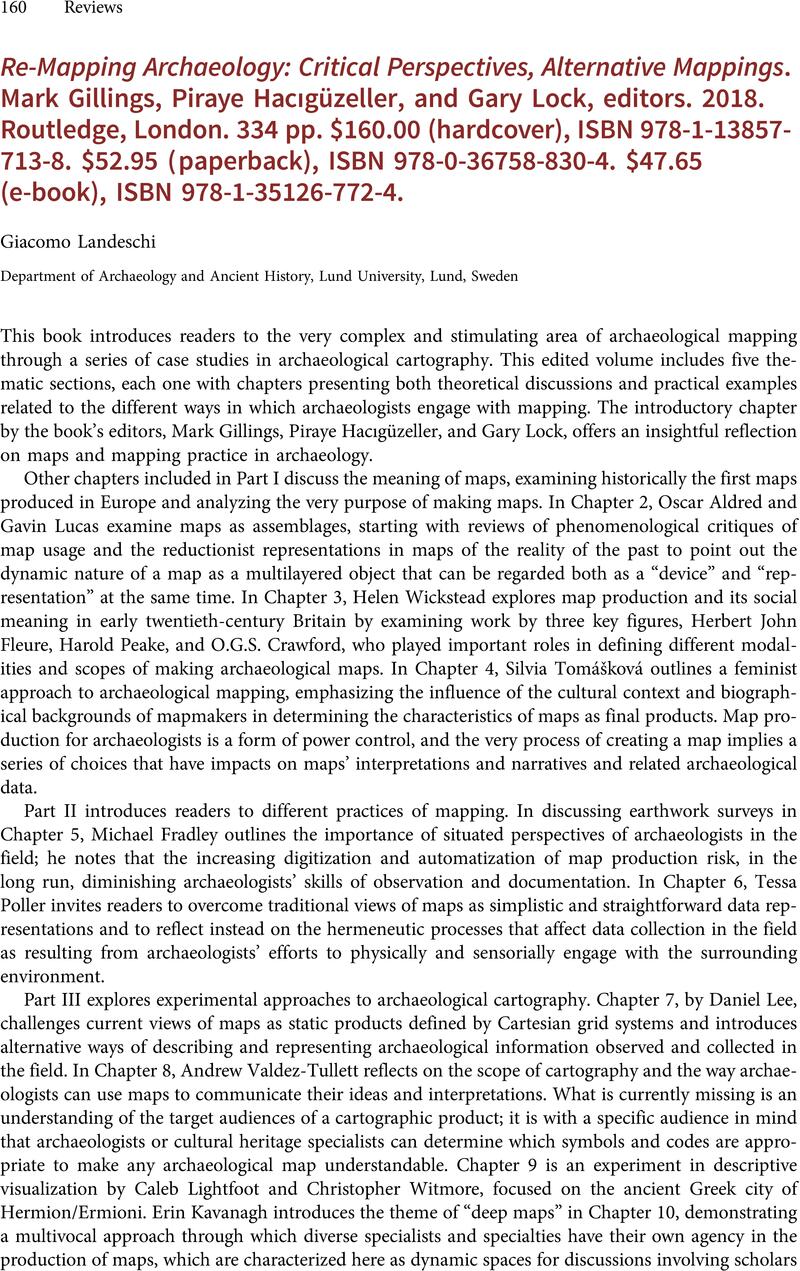No CrossRef data available.
Article contents
Re-Mapping Archaeology: Critical Perspectives, Alternative Mappings. Mark Gillings, Piraye Hacıgüzeller, and Gary Lock, editors. 2018. Routledge, London. 334 pp. $160.00 (hardcover), ISBN 978-1-13857-713-8. $52.95 (paperback), ISBN 978-0-36758-830-4. $47.65 (e-book), ISBN 978-1-35126-772-4.
Review products
Re-Mapping Archaeology: Critical Perspectives, Alternative Mappings. Mark Gillings, Piraye Hacıgüzeller, and Gary Lock, editors. 2018. Routledge, London. 334 pp. $160.00 (hardcover), ISBN 978-1-13857-713-8. $52.95 (paperback), ISBN 978-0-36758-830-4. $47.65 (e-book), ISBN 978-1-35126-772-4.
Published online by Cambridge University Press: 11 December 2023
Abstract
An abstract is not available for this content so a preview has been provided. Please use the Get access link above for information on how to access this content.

- Type
- Review
- Information
- Copyright
- Copyright © The Author(s), 2023. Published by Cambridge University Press on behalf of the Society for American Archaeology


